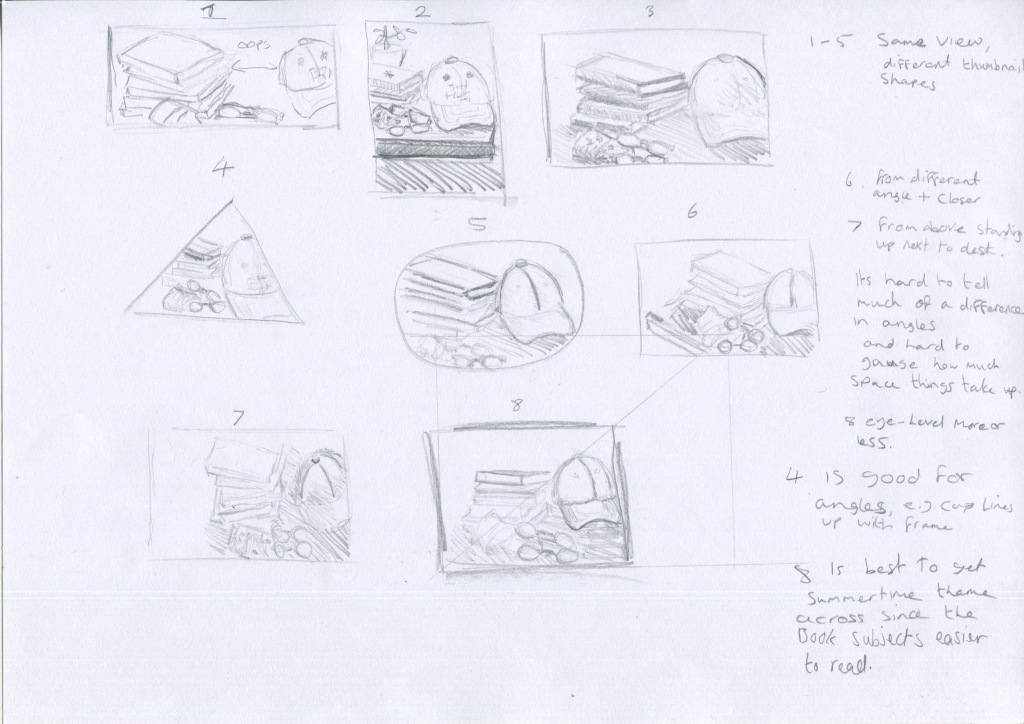I have chosen ‘Summertime’ as my theme and used a cap, a couple of sunglasses, a face mask and some climbing and wildlife books, although this year’s summertime could be summed up with a tv and some pyjamas for those of us stuck at home because of that whole virus thing.
I took 30 photos but chose to put 12 here:












I tried placing the items in different positions and tried taking photos close up and at different angles and flash to try to improve the backlighting issue.
I then repeated the exercise with drawing rather than photos as instructed:

I chose the picture 8 layout and drew from life rather than a photo, and used the scaling system to recreate the thumbnail proportions for the larger image:

I think the image is successful although I asked my mum to guess the theme and she said outdoors which could also work, but outdoors is what summertime means to me, anyway.
In the course material we were asked a few questions:
Which viewpoint best fitted the word your objects illustrated? Why was this?
I feel that the eye-level (thumbnail 8) viewpoint worked best as mentioned earlier, the subjects of the books was clearly visible this way which allowed me to show different subjects and thus give more clues as to the theme.
Which format best illustrated your words?
I struggle to understand this question. Words as in my answer to the previous question? Words as in the theme word summertime? In terms of the best format I think the rectangular format worked best as it meant I could include the whole length of the books and the objects were arranged in a rectangular fashion. This allowed more information and as mentioned in my previous answer, more clues about the theme.
Did changing viewpoints make you think differently about your choice of objects and arrangement of them?
Some of the photos show a neater arrangement which seemed ok whilst I was taking photos from a lower angle, but when I began taking photos from above it showed it wasn’t a visually pleasing arrangement because of the bare space on the desk and it didn’t feel like a great composition.
Now that I have completed the exercise I am relieved. I found it hard to decipher the individual steps required to complete it and the thumbnails took me a while to do. I’m happy though because this exercise gave me a chance to draw from life rather than a photograph which is one of the things I received in the part 2 feedback to work on. It was a workout for my brain but I definitely need a lot of practice in this area! There also ended up a fair amount of space in the picture above and below the objects which isn’t great. I will look out for this next time.